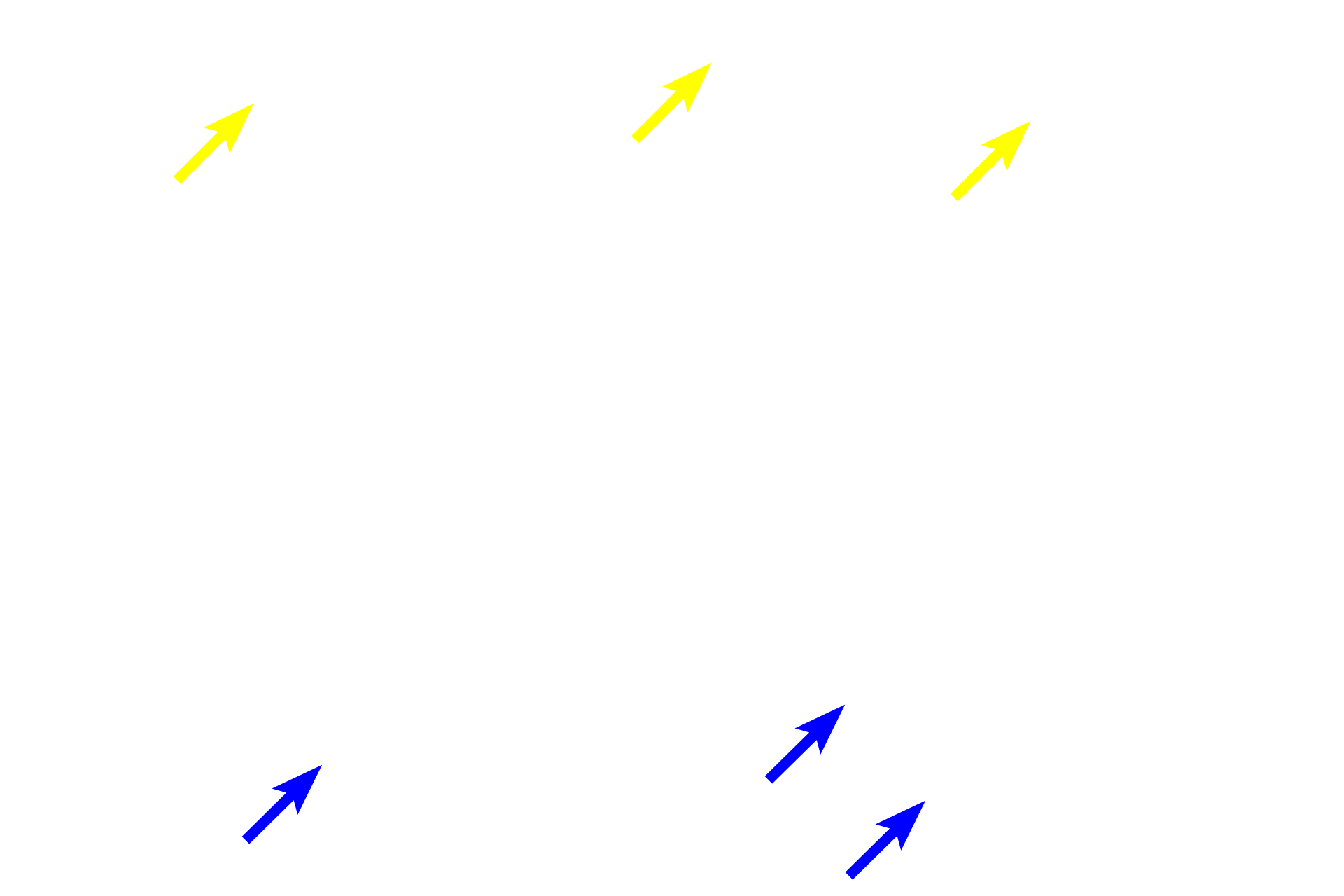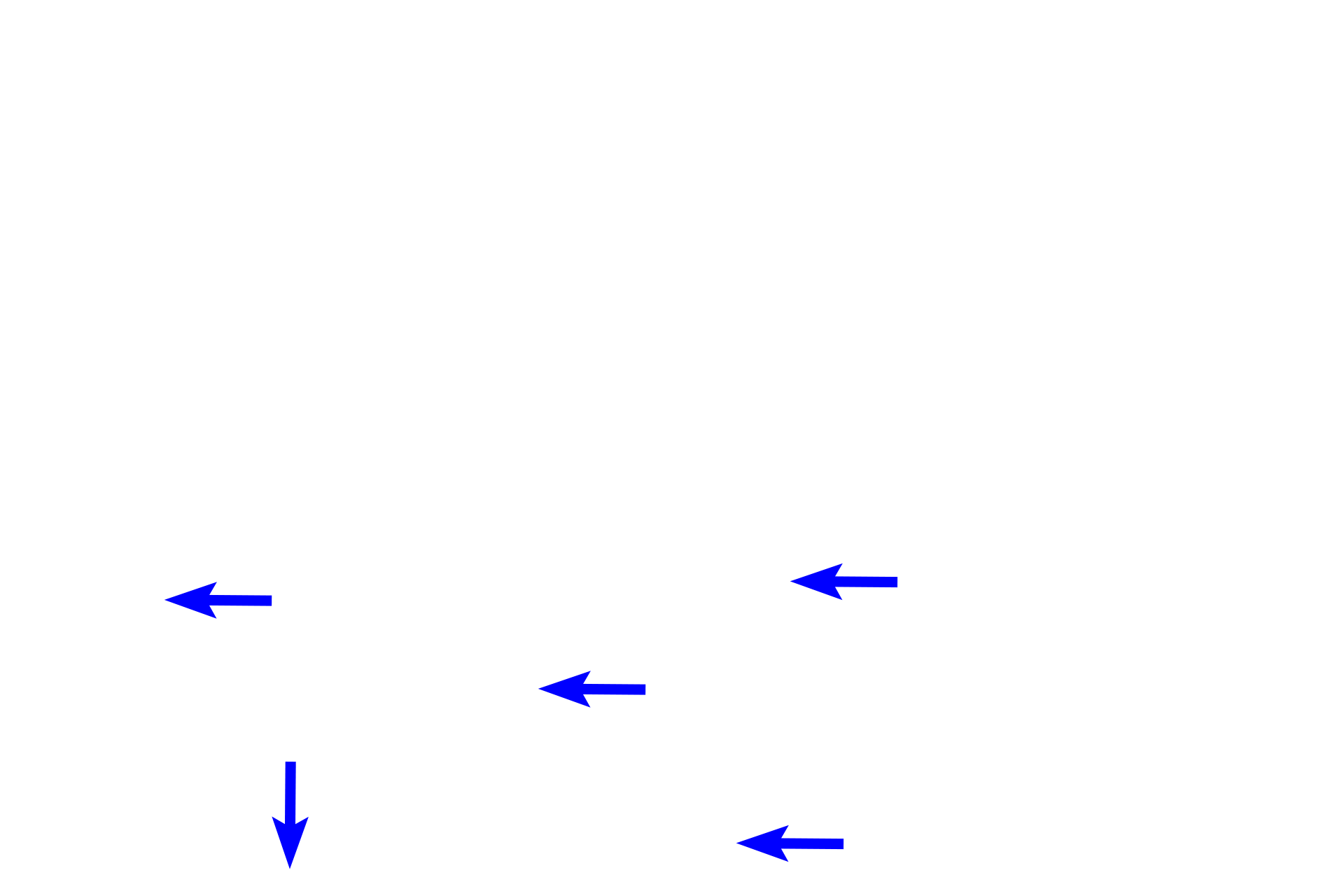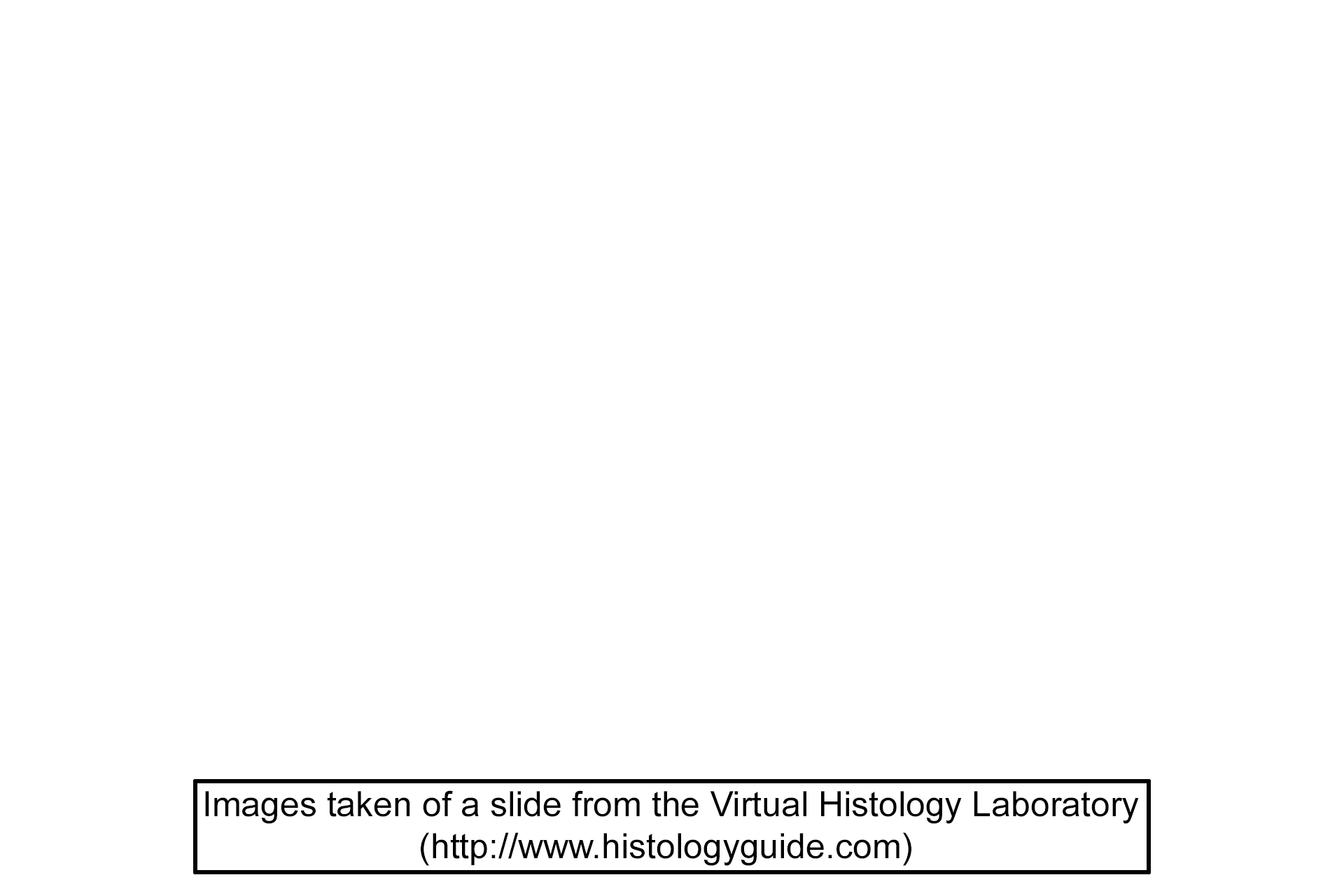
Muscle spindle
Muscle spindles, seen here in longitudinal (top) and cross sections (bottom), are encapsulated stretch receptors in skeletal muscles that regulate muscle contraction and detect changes in muscle length. Muscle spindles are composed of intrafusal fibers which are modified skeletal muscle fibers of two types, nuclear bag and nuclear chain fibers. Spiraling sensory nerve endings surround the nuclear bag fibers. Intrafusal fibers also receive efferent innervation. A fluid-filled space separates the internal capsule from an outer external capsule. 800x

Nuclear bag fibers
Muscle spindles, seen here in longitudinal (top) and cross sections (bottom), are encapsulated stretch receptors in skeletal muscles that regulate muscle contraction and detect changes in muscle length. Muscle spindles are composed of intrafusal fibers which are modified skeletal muscle fibers of two types, nuclear bag and nuclear chain fibers. Spiraling sensory nerve endings surround the nuclear bag fibers. Intrafusal fibers also receive efferent innervation. A fluid-filled space separates the internal capsule from an outer external capsule. 800x

Nuclear chain fibers
Muscle spindles, seen here in longitudinal (top) and cross sections (bottom), are encapsulated stretch receptors in skeletal muscles that regulate muscle contraction and detect changes in muscle length. Muscle spindles are composed of intrafusal fibers which are modified skeletal muscle fibers of two types, nuclear bag and nuclear chain fibers. Spiraling sensory nerve endings surround the nuclear bag fibers. Intrafusal fibers also receive efferent innervation. A fluid-filled space separates the internal capsule from an outer external capsule. 800x

Sensory nerve endings
Muscle spindles, seen here in longitudinal (top) and cross sections (bottom), are encapsulated stretch receptors in skeletal muscles that regulate muscle contraction and detect changes in muscle length. Muscle spindles are composed of intrafusal fibers which are modified skeletal muscle fibers of two types, nuclear bag and nuclear chain fibers. Spiraling sensory nerve endings surround the nuclear bag fibers. Intrafusal fibers also receive efferent innervation. A fluid-filled space separates the internal capsule from an outer external capsule. 800x

Inner capsule
Muscle spindles, seen here in longitudinal (top) and cross sections (bottom), are encapsulated stretch receptors in skeletal muscles that regulate muscle contraction and detect changes in muscle length. Muscle spindles are composed of intrafusal fibers which are modified skeletal muscle fibers of two types, nuclear bag and nuclear chain fibers. Spiraling sensory nerve endings surround the nuclear bag fibers. Intrafusal fibers also receive efferent innervation. A fluid-filled space separates the internal capsule from an outer external capsule. 800x

Outer capsule
Muscle spindles, seen here in longitudinal (top) and cross sections (bottom), are encapsulated stretch receptors in skeletal muscles that regulate muscle contraction and detect changes in muscle length. Muscle spindles are composed of intrafusal fibers which are modified skeletal muscle fibers of two types, nuclear bag and nuclear chain fibers. Spiraling sensory nerve endings surround the nuclear bag fibers. Intrafusal fibers also receive efferent innervation. A fluid-filled space separates the internal capsule from an outer external capsule. 800x

Extrafusal muscle fibers >
The bulk of a skeletal muscle is composed of muscle fibers called extrafusal to differentiate them from the intrafusal fibers that form muscle spindles. As seen here, they surround the muscle spindles.

Image source >
Image from the Virtual Histology Laboratory website.